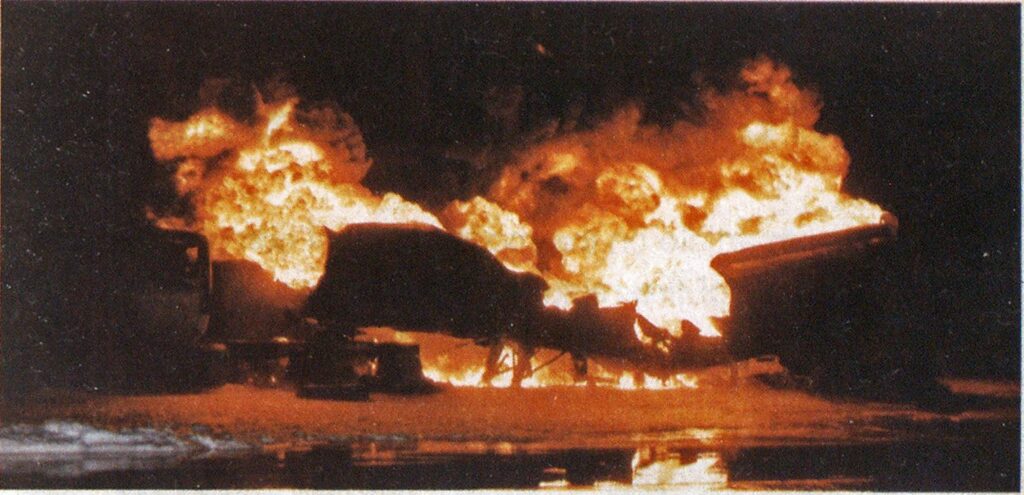
Car-tanker collision results in three-alarm fire
DEPARTMENTS
Dispatches
On August 25, 1984, at 4:37 A M., the Charlotte, N.C., Fire Department was notified of a collision involving an automobile and a tanker truck carrying 8,300 gallons of gasoline. The collision occurred as a suspected thief attempted to elude police officers.
The getaway car ran a stop sign at an intersection, striking the eastbound tanker broadside and shearing the tank’s discharge valves. The tanker traveled nearly 600 feet before coming to a stop, spreading gasoline over the three eastbound lanes. Flammable vapors were ignited in the vicinity of the automobile and flashed a distance of two blocks to the tanker within seconds of the collision.
The intense fire posed an immediate threat to this heavily developed highway strip. Threatened occupancies included several fast-food restaurants, an auto garage, an outdoor provisions company, a swimming pool dealership, and three large-volume car dealerships. A hotel and apartment complex along the boulevard’s storm drain were also threatened.
Battalion Chief David Maples was first to arrive. He quickly requested the department’s foam truck and airport crash trucks in addition to a second alarm. This soon escalated to a third alarm as flames blowing out of sewer openings that were remote from the accident scene were reported as structural fires.
Top priority was placed on exposure protection. Master streams and large caliber handlines were put in service for exposure protection, flowing a total of approximately 7,000 gpm. Three battalion chiefs, eight engine companies, three ladder companies, the hazardous materials team, two crash trucks, the foam truck, a squad, rescue truck, hose tender, mobile command post, an engine from the Hickory Grove Volunteer Fire Department, the county emergency medical service, the Charlotte Life Saving Crew, the Charlotte Police Department, the environmental health department, and various fire department support staff responded.
In addition to the immediate fire problem, a secondary ignition hazard and an environmental problem arose from the large amount of gasoline that escaped into the storm drain. Maps of the storm drain system carried by the mobile command post enabled emergency personnel to quickly determine the areas to evacuate. The maps also showed that the storm drain feeds a creek, and firefighters quickly dammed this. The command post provided an excellent facility for fire, police, ambulance and environmental health officials to coordinate their efforts.
During the course of the operation, no firefighters were injured. The only casualty was the driver of the car, who was admitted to a hospital for treatment of second-degree burns. Exposure damage was limited to stock in front of the outdoor provisions company, parked automobiles, plastic business signs, utility poles, and the road surface.
Quick protection of exposures by first arriving companies is credited with preventing more damage. This protection was maintained with assistance from secondand third-alarm companies for approximately 30 minutes, until sufficient quantities of AFFF and dry chemical could be applied. The evacuation remained in effect for six hours while an investigation was conducted, the wreckage was cleared, and unignited gasoline was recovered.
Chief Maples noted that the time of day was a significant factor in preventing more casualties and property damage, “If this incident had occurred at 4:30 in the afternoon in rush hour traffic instead of 4:30 in the morning, we probably would have had fatalities, and it would have been extremely difficult to reach the scene and get into operation quickly.”

Photo by David Lowery

Photo by David Lowery


